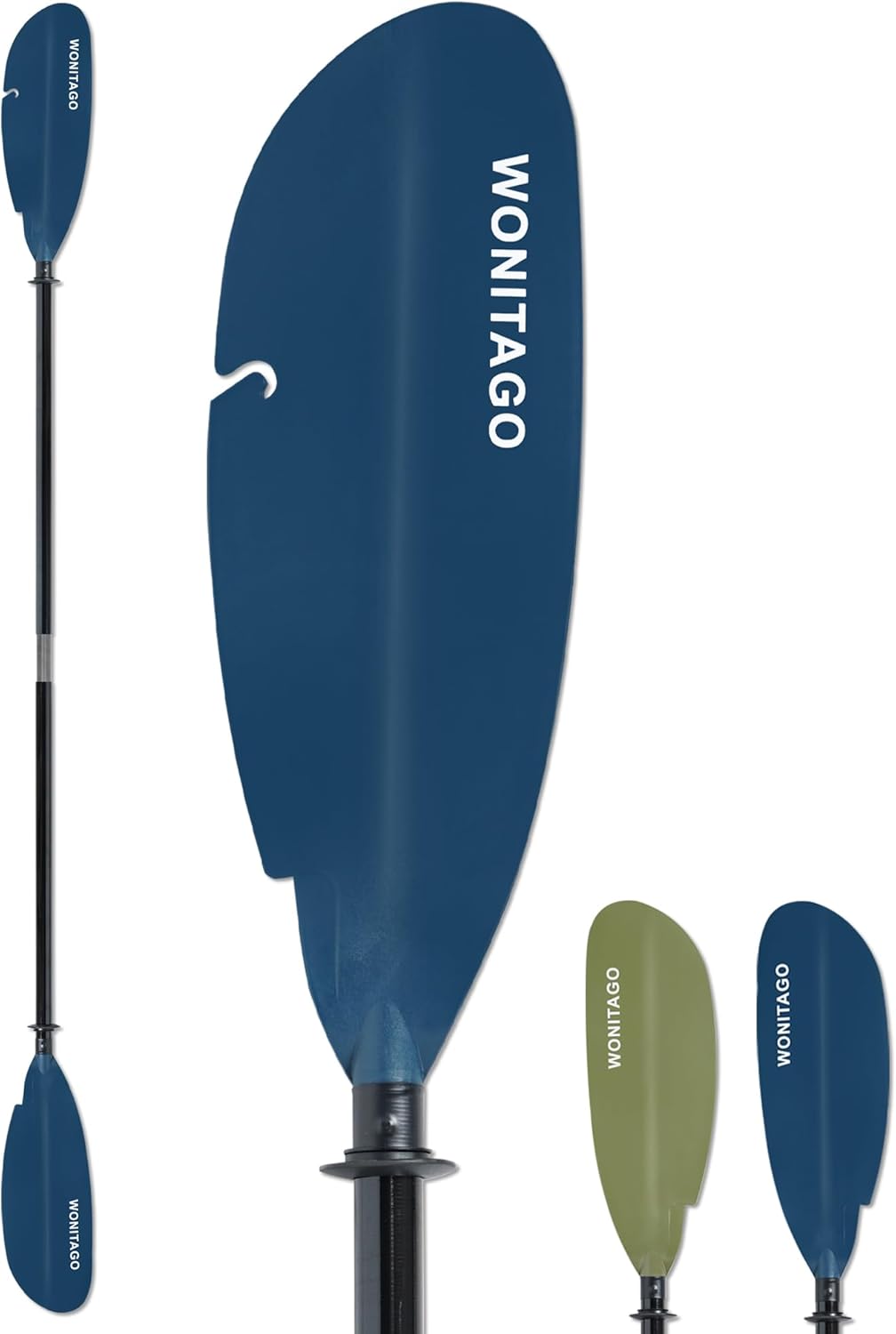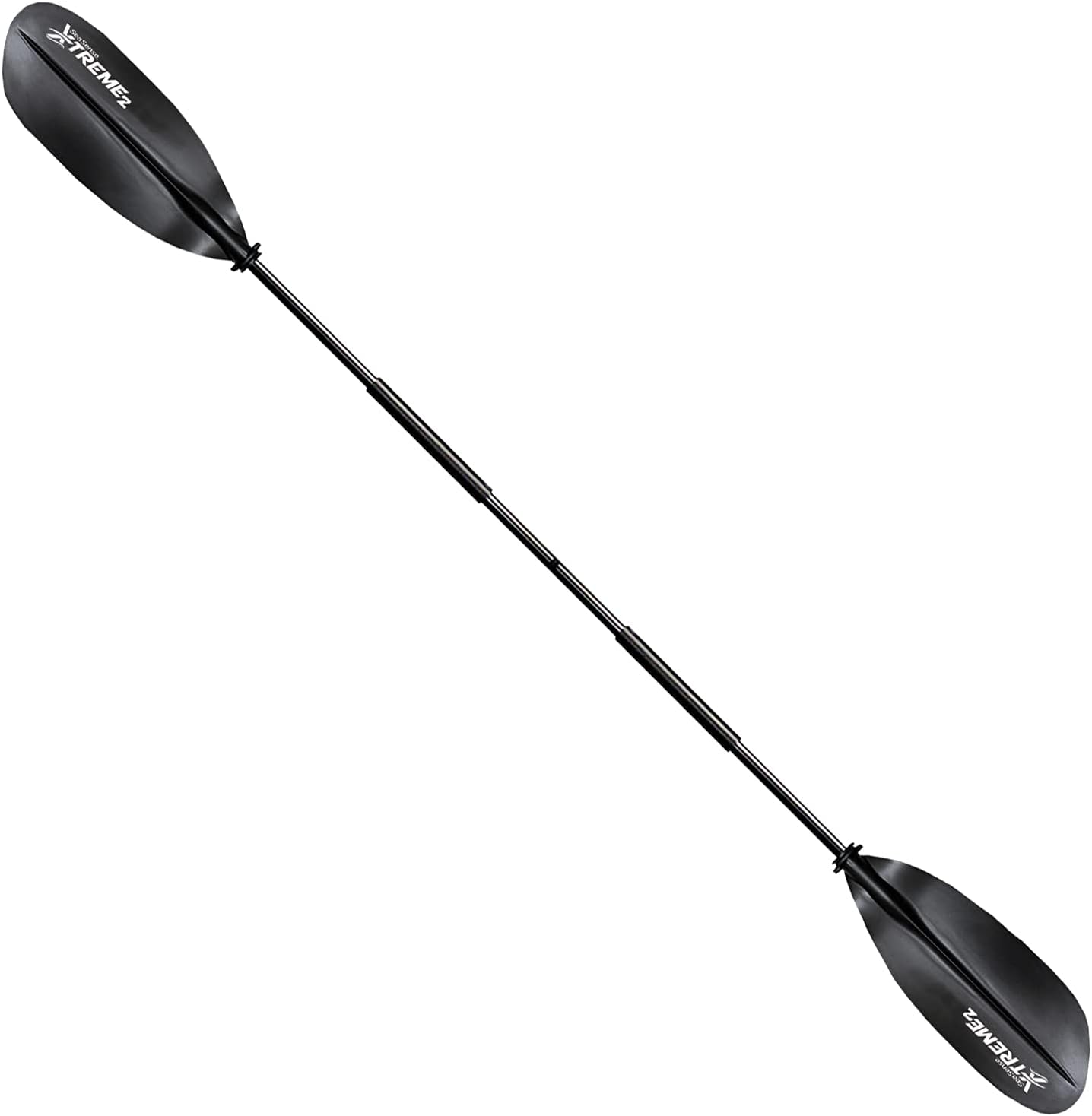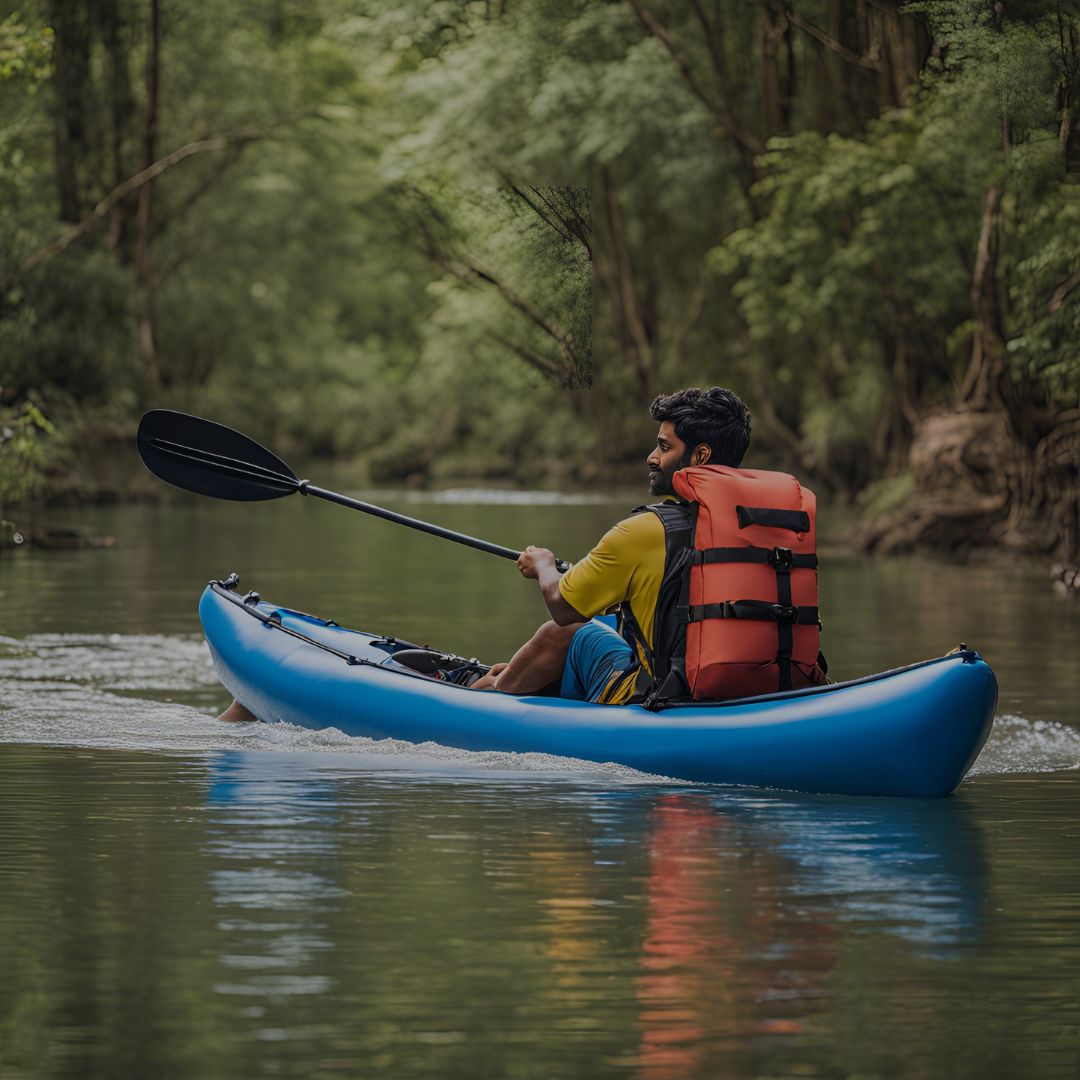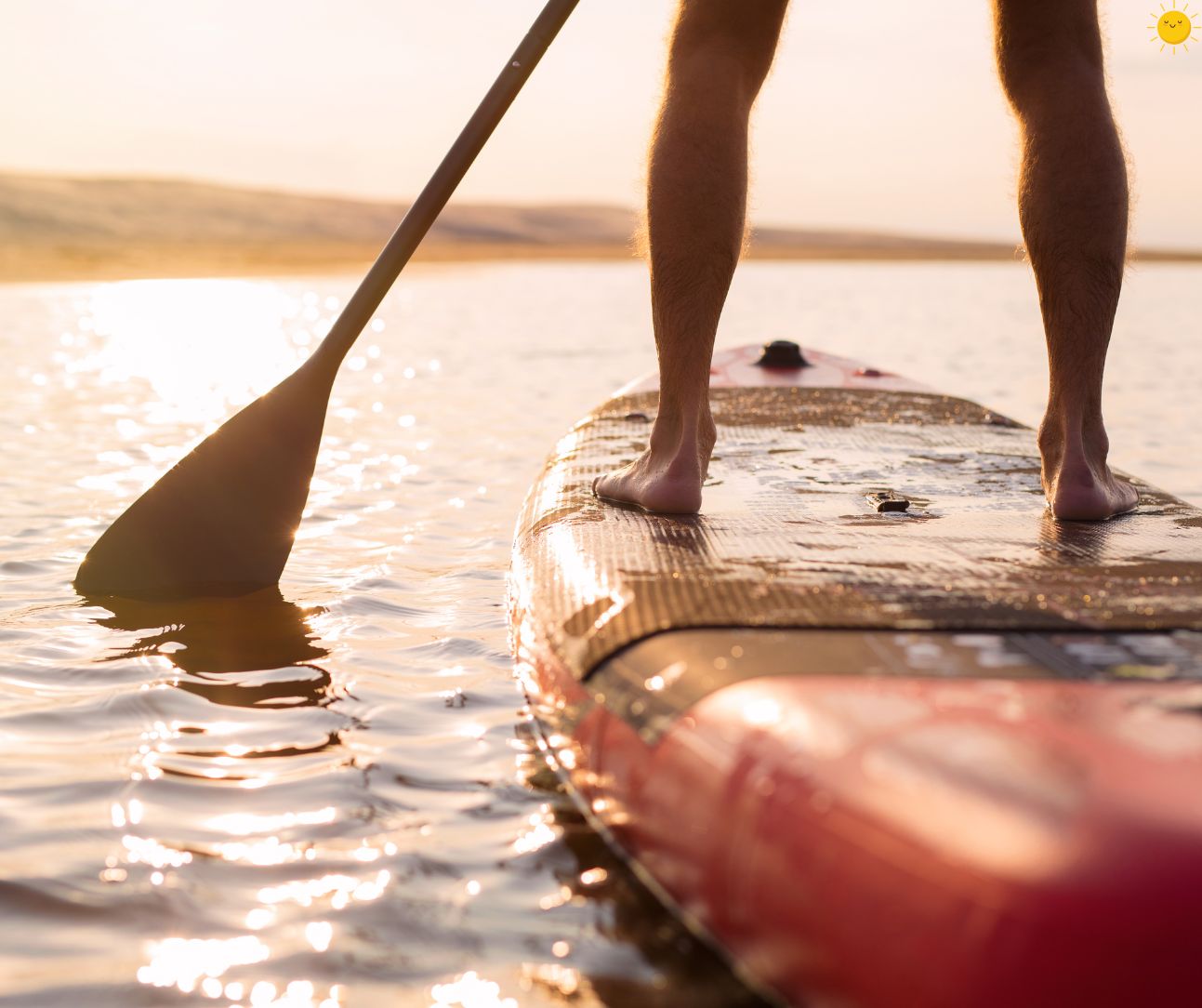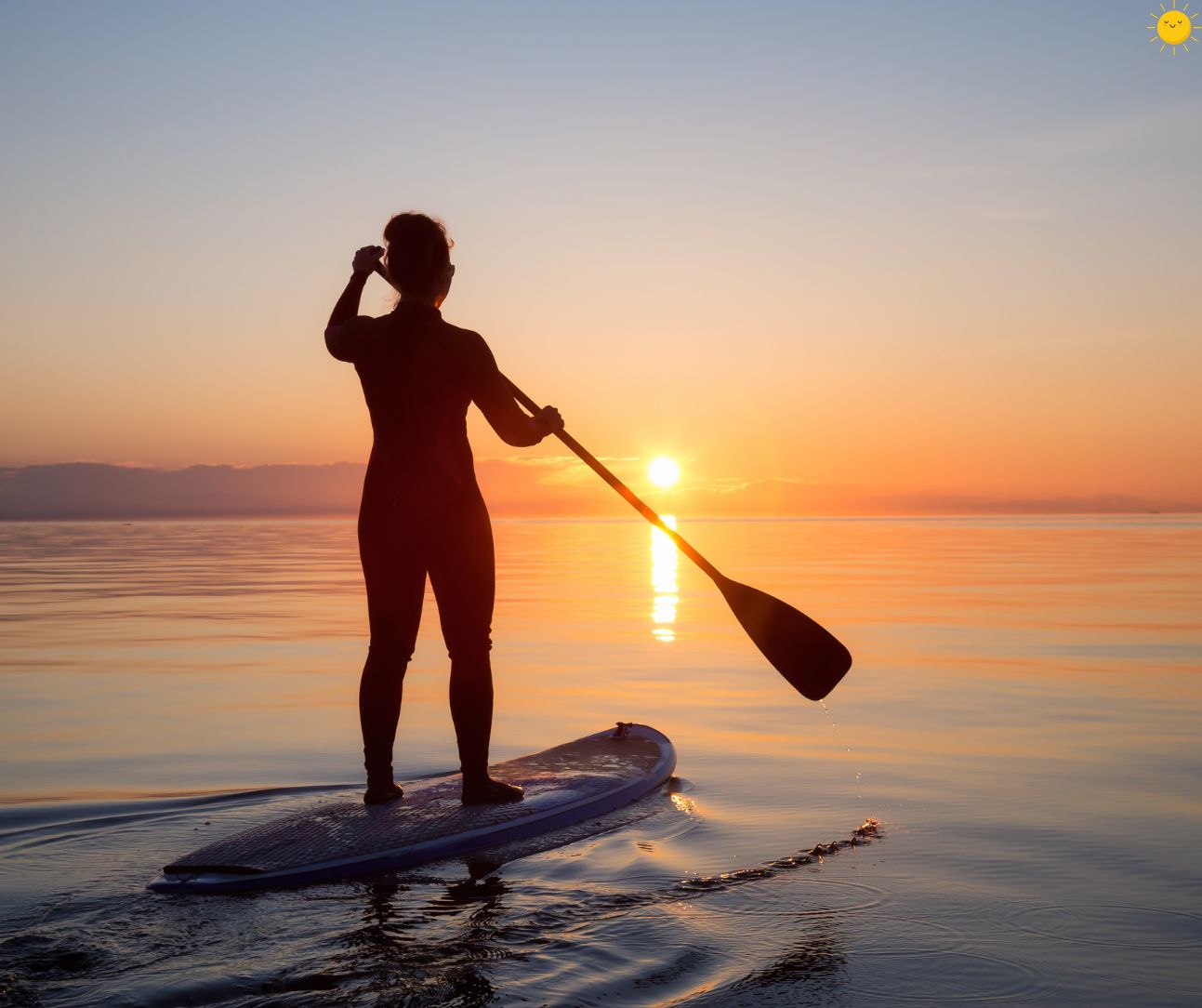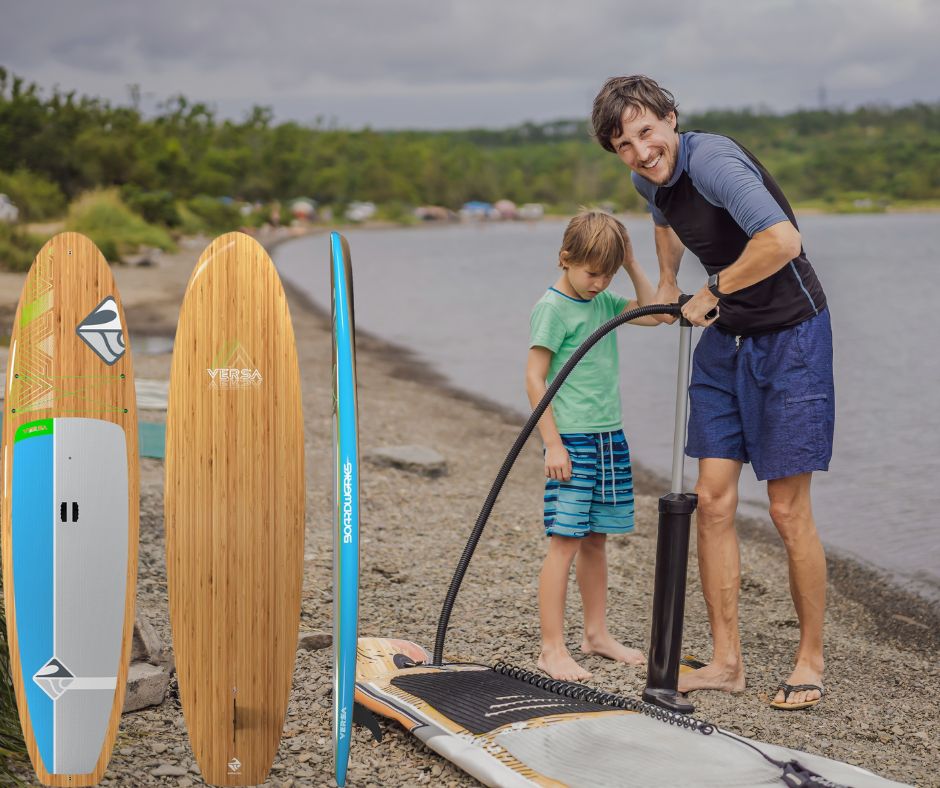How To Choose A Kayak Paddle – The Complete Expert Guide
If you have ever wondered how to choose a kayak paddle, you are not alone. In fact, many new paddlers spend more time debating paddle length than they do learning to steer straight.
Someone once joked that the quickest way to end a friendship is to lend your buddy a kayak paddle that’s too short, you will never hear the end of it. Choosing the right paddle can feel like staring at an aisle of broomsticks in disguise, but don’t worry.
By the end of this guide, you will know exactly what to pick, why it matters, and how to avoid the mistakes that frustrate so many beginners.
How to Choose a Kayak Paddle
To choose a kayak paddle, measure both your height and the width of your kayak, then use a kayak paddle size chart to find the right length. Next, match your blade style (low-angle for relaxed strokes, high-angle for power) with the kind of paddling you plan to do.
Finally, decide on materials (aluminum, fiberglass, or carbon), shaft type (straight or bent), and ferrule adjustment (two-piece or adjustable).
That’s the short version. But if you stop there, you will miss the subtle choices that determine whether your shoulders ache after half an hour or whether you glide across the water without breaking a sweat. Let’s dig deeper into every part of this decision.
Here is the step-by-step guide on how to choose a kayak paddle:
|
|
|
|
Step 1: Decide What You Mostly Do On The Water
Action: Name the activity you will do most often: recreational, touring, fishing, whitewater, surf.
Why: Paddle length, blade shape, and material depend on activity.
Touring favors efficiency. Whitewater favors control. Fishing often needs longer paddles because the boat is wide and you want low-effort, quiet strokes.
How to check: If more than half your outings are one type, use that as the guide.
Step 2: Take Two Measurements: Your Height And Your Kayak Width
Action: Measure your standing height. Measure the widest part of your kayak, or the cockpit coaming width if you use a sit-in kayak.
Why: Paddle sizing mixes paddler height and kayak width. Taller people reach farther. Wider boats need longer paddles to avoid hitting the hull.
How to check: Record both numbers. You will use them in Step 4.
Step 3: Pick a Starting Paddle Length With A Simple Rule
Action: Use this practical rule of thumb as a starting point:
- Narrow/touring kayak or narrow cockpit: start at about 210–220 cm.
- Typical recreational kayak: start at 220–240 cm.
- Wide fishing or sit-on-top kayak: start at 240–260 cm.
- Whitewater kayaks: start at 180–195 cm.
Why: These ranges balance reach and torso rotation for common body sizes and boat widths. They are starting points, not final answers.
How to check: Use Step 4 to fine tune the length.
Step 4: Use a Quick Sizing Test On Land
Action: Stand the paddle upright beside you. Reach up and curl your fingers over the top edge of the blade. If your elbow remains slightly bent and comfortable, the length is in the right ballpark.
Why: This is the fastest physical check for reach and shoulder angle.
How to check: If the paddle forces your shoulders up or your arm is fully extended, shorten it. If you have to stretch or lean away from the boat to reach the blade, lengthen it.
Step 5: Choose Blade Type For Your Stroke Style
Action: Match blade area and shape to your cadence and power needs.
- Low-angle, longer/narrow blades: use for long, relaxed strokes, touring, and fishing.
- High-angle, shorter/wider blades: use for quick, powerful strokes, surf and whitewater.
- Dihedral blades: choose if you want reduced blade flutter and easier control.
Why: Blade shape changes the feel of every stroke. The right match reduces fatigue and improves control.
How to check: If you tire quickly during steady paddling, try a smaller, lower-angle blade. If you need quick acceleration or bracing power, try a high-angle blade.
Step 6: Select Materials Based On Weight, Budget, And Durability
Action: Choose between aluminum with plastic blades, fiberglass, and carbon.
- Aluminum is cheap and tough but heavy.
- Fiberglass balances cost and weight.
- Carbon is light and stiff but costly.
Why: Lighter paddles reduce shoulder fatigue over hours on the water. Stiffer shafts give more efficient power transfer.
How to check: If you plan long trips, prioritize lighter materials. If you expect hard knocks or you are on a tight budget, choose a sturdier, heavier option.
Step 7: Decide Shaft Type And Feathering
Action: Choose straight or bent shaft and fixed or adjustable feathering.
- Bent shafts reduce wrist twist and can feel more ergonomic on long paddles.
- Adjustable ferrules let you change length and feathering for different users and conditions.
- Feathered blades reduce wind resistance at the cost of slightly more wrist rotation.
Why: Wrist comfort and wind handling affect how long you can paddle without pain.
How to check: Try both shaft shapes if possible. If you share the paddle or travel with it, prefer a quality two-piece adjustable model.
Step 8: Try The Paddle On Water Using A Simple Checklist
Action: Test the candidate paddle on a short outing or demo session. Use this checklist:
- Stroke feel for 10 minutes without pain.
- Ease of forward strokes and ability to maintain cadence.
- Comfort of wrists and shoulders after 10 to 20 minutes.
- How it handles crosswind and wakes.
- Whether the blades splash or track cleanly.
Why: Land testing can only go so far. Water gives the real answer.
How to check: If your wrist aches, try a different shaft or different feather angle. If you are splashing or pulling water inefficiently, try a different blade shape or a slightly shorter/longer paddle.
Step 9: Fine-Tune Length And Setup
Action: Make small changes and retest. Shorten by 5–10 cm if you want easier draws and lean turns. Lengthen by 5–10 cm if you want more power or to avoid hull strikes on a wide boat. Adjust feather angle for wind.
Why: Small adjustments can transform comfort and efficiency without buying a new paddle.
How to check: Repeat the water test after each change. Keep notes on what felt better.
Step 10: Check Balance And Swing Weight
Action: Hold the paddle at the middle and at the shaft. Rotate it slowly to feel its balance point.
Why: A paddle with heavy blades and a light shaft can feel tiring even if its listed weight is low. Balance affects how smooth your strokes feel.
How to check: If the blades feel heavy and the paddle wants to flip in your hands, try a different model with more even mass distribution.
Step 11: Inspect Joints, Ferrules, And Construction Quality
Action: Look for tight ferrules, no play at the joint, and smooth locking mechanisms. Inspect blade edges for cracks or weak mould lines.
Why: Ferrule wear or a loose joint is a common failure. A good seal keeps water and grit out.
How to check: Twist the joined paddle pieces. There should be no rattle and the locking action should engage solidly.
Step 12: Maintain The Paddle And Know When To Replace It
Action: Rinse after trips, avoid prolonged sun exposure, and store horizontally or suspended by the shaft. Replace if you see structural cracks, broken blades, or a ferrule that will not lock.
Why: Proper care extends life and prevents sudden failure. A failing paddle is a safety hazard.
How to check: Regularly inspect before outings. If you notice increasing flex, chips in the blade, or slippage at the joint, plan a replacement.
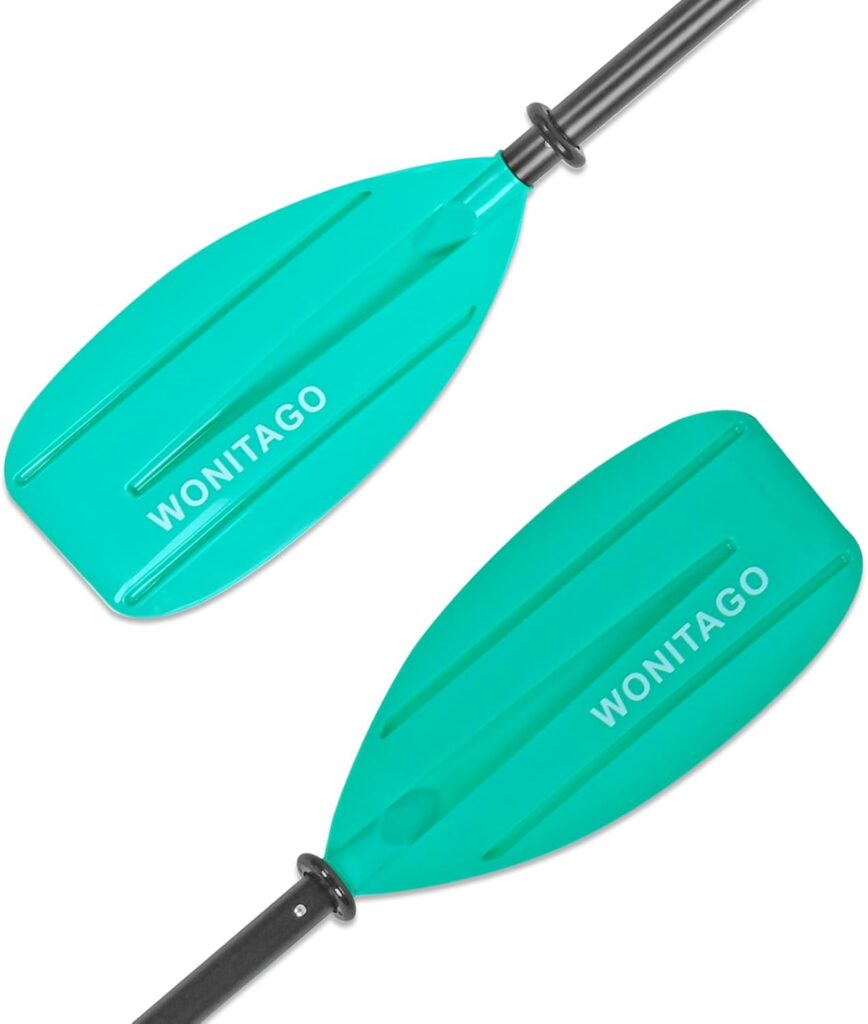
Why Paddle Choice Matters More Than People Think
Many beginners assume any paddle will do, especially since many entry-level kayaks come bundled with a basic one. The problem is that the paddle acts as your engine.
If it is too short, you will constantly scrape the sides of the boat. If it is too long, you will waste energy and wear out your shoulders. Poorly matched blades or heavy shafts can also lead to wrist strain, tendonitis, or simply a miserable day on the water.
An experienced guide will tell you this: a high-quality paddle often makes more difference to your comfort than the kayak itself.
That is why when people search “what size kayak paddle do I need” or “how do you size a kayak paddle,” the real answer involves more than just numbers: it is about ergonomics, efficiency, and enjoyment.
RELATED: Best Kayak Roof Racks
Matching Paddle to Activity
Choosing a paddle is not just about body size. The type of kayaking you do matters just as much:
- Recreational kayaking: A mid-length, low-angle paddle is comfortable and affordable.
- Touring or sea kayaking: Light carbon paddles with low-angle blades are best for efficiency over distance.
- Whitewater: Shorter, high-angle paddles with reinforced blades help with control and durability.
- Fishing: Long paddles with low-angle blades prevent clumsy splashes while reaching across wide decks.
- Surf kayaking: High-angle blades allow rapid strokes in surf zones.
So, if you came here asking how to choose a kayak paddle for fishing, the answer is clear: look for length (often 250–260 cm), low-angle blades, and durable yet lightweight material.
Weight, Balance, and Ergonomics
One overlooked factor is swing weight, the balance point of the paddle. A paddle might weigh the same as another, but if the blades are heavier than the shaft, it will feel clunky.
Balanced paddles allow smoother strokes and prevent fatigue. If you ever read a kayak paddle review that complains of “heavy swing” or “tiring fast,” this is what they mean.
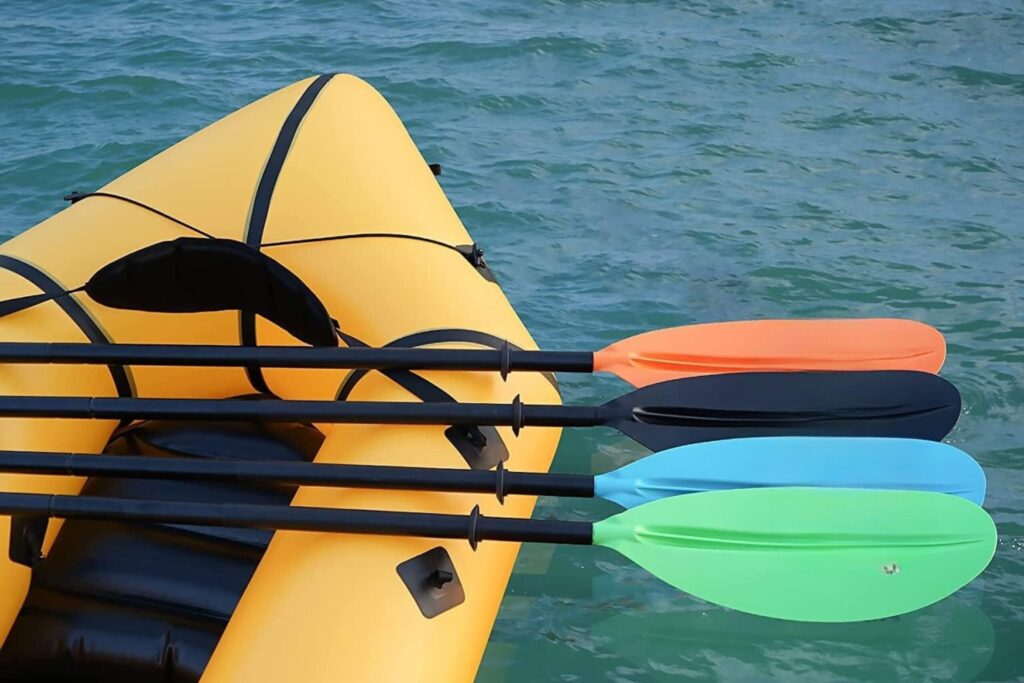
Fixed vs Adjustable Paddles
Two-piece paddles are easier to transport and store. Some high-end paddles are fully adjustable in length and feathering, which is ideal if multiple people use the same paddle or if you switch between kayaks.
While fixed paddles are slightly lighter, adjustable ones provide more flexibility and convenience.
Common Mistakes to Avoid
Many beginners fall into the same traps:
- Buying a paddle based only on price.
- Choosing the paddle bundled with the kayak without checking the fit.
- Ignoring weight and balance.
- Overlooking how blade shape affects their paddling style.
A good rule: invest in the best paddle you can reasonably afford. The right paddle will last years and dramatically improve your time on the water.
How to Test a Paddle Before Buying
If you can visit a shop or demo day, take advantage. Hold the paddle at shoulder width, simulate strokes, and check wrist comfort. If possible, try a short paddle session. Notice whether the paddle feels heavy after a few minutes or whether it slices smoothly through the water.
Care and Maintenance
A paddle can last decades with proper care. Rinse it after every trip, especially in salt water. Keep sand out of ferrules, avoid leaving it in direct sun for long periods, and check for cracks or chips in blades.
FAQs on How to Choose a Kayak Paddle
- What size kayak paddle do I need? Use your height and kayak width, then match to a size chart. Fishing kayaks usually need longer paddles.
- How do you size a kayak paddle? Stand the paddle upright: if you can comfortably curl your fingers over the blade tip, it’s the right length.
- What is the best fishing kayak? That depends on budget, but remember that a wide fishing kayak will always require a longer paddle.
- Best padded seats for kayaks? If comfort is your concern, pairing a proper seat upgrade with the right paddle will completely change your paddling experience.
- What is the best kayak paddle? The “best” depends on your use. A casual paddler may love a fiberglass mid-range paddle, while a long-distance tourer swears by a carbon feathered paddle.
The Bottom Line on How to Choose a Kayak Paddle
Learning how to choose a kayak paddle is about more than ticking off a chart. It is about matching your body, your kayak, and your paddling style so the movement feels natural and efficient. Once you have the right paddle, you stop thinking about it altogether, it becomes an extension of your arms.
Whether you are browsing a kayak paddle review, testing paddles at a demo day, or comparing materials online, remember this: a good paddle is not just equipment. It is the bridge between you and the water. Choose wisely, and every stroke will feel smoother, faster, and lighter.

